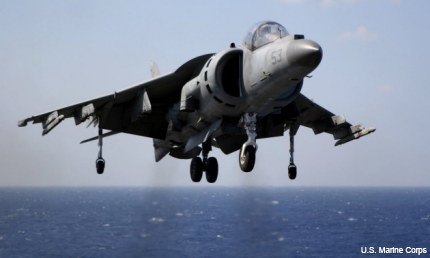General Dynamics upgrades computer system for Marines' fighter jet
The company has just delivered the third software release for the mission system computer in the AV-8B Harrier II attack aircraft.

The AV-8B Harrier II attack aircraft.
General Dynamics has just delivered the third software release for the mission system computer (MSC) in the AV-8B Harrier II attack aircraft used by the Marines. The company’s Mission Systems’ Future Airborne Capability Environment (FACE) team provided the software to Naval Air Systems Command, General Dynamics stated in a release.
The software release using the FACE Technical Standard – an aviation focused professional group that aims for delivering standards and business models for avionics systems and norms within industry suppliers, customers and users – will provide “improved functionality for faster, less expensive integration of MSC applications” General Dynamics said.
"This is the first military aircraft computer to have the NAVAIR advanced computing environment," said Carlo Zaffanella, vice president of Maritime and Strategic Systems for General Dynamics Mission Systems. "The goal of this capability will be for technical professionals working on the AV-8B Harrier to swap applications in a way that's similar to changing and upgrading applications on a smartphone.
The AV-8B Harrier II a vertical/short takeoff and landing jet made by McDonnell Douglas.
In addition to being the sole designer of the MSC for the Harrier fleet, the company has designed the Advanced Mission Computer used on other Navy fighter aircraft variants such as the F/A-18E, F/A-18F and EA-18G electronic warfare aircraft.
“Built on commercial off-the-shelf open architecture, advanced mission computers are designed for high-performance fighter aircraft, providing general-purpose processing, display and graphics processing input/output, video and other mission systems functions,” General Dynamics said in a release.
General Dynamics will also begin testing other processor and core software in AV-8B Harrier MSCs, of which it received the contract to upgrade next-generation FACE Infrastructure and capabilities for in 2013.




